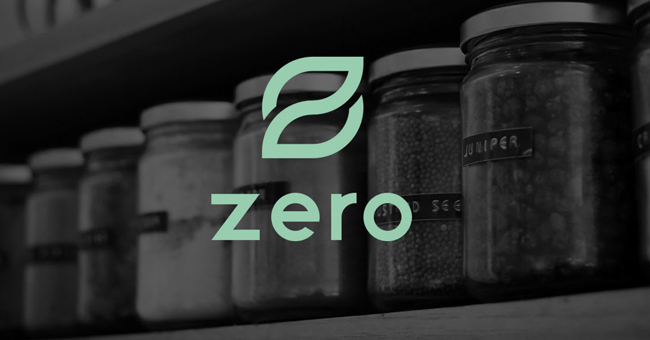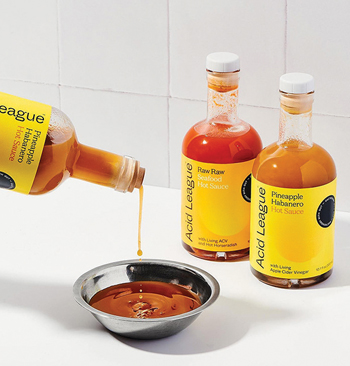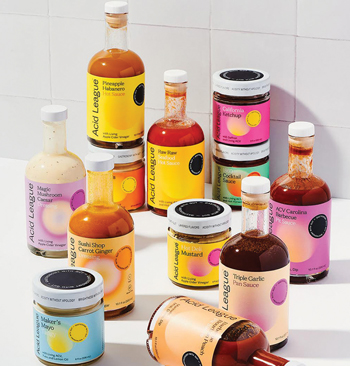NOSHscape: The Latest Food Brand News
Beyond Meat & Pepsi JV Launches Jerky in Retail
Beyond Meat plant-based jerky has launched in Walmart, Ralphs, and online. It’s the first retail launch of the PLANet Partnership.
Announced early last year, the PLANet Partnership joint venture was presented by its founders as a way to utilize Beyond Meat’s product development expertise and PepsiCo’s wide distribution network to develop plant-based beverages and snacks. While Beyond Meat is seeking to prove that it is able to go beyond the meat case, PepsiCo is looking to cater to younger consumers seeking out more sustainable, better-for-you products.
Other global corporations have since followed the partnership path, with Kraft Heinz announcing its own JV with milk and meat alternative brand The NotCo last month.
In the case of PLANet Partnership, Beyond Meat sells products into the JV, and then splits the profit or loss with PepsiCo depending on its retail sales, a structure revealed by Beyond Meat COO Phil Harden during the analyst call that featured Brown’s snacking.
As for product details, Beyond Jerky is available in Original, Teriyaki, and Hot and Spicy flavors, and is being sold on Walmart.com for $3.98 per 3 oz. bag, with natural grocery chain Ralphs listing the item for $5.29 on its ecommerce site. Single-serving 1 oz. bags are also on sale at Walmart for $1.78 and on Amazon.com in a 10-pack for $20.99. Kroger – which owns Ralphs – also has a listing for the jerky, but does not yet have a price.
Each half-cup (30 gram) serving of jerky contains 10 grams of protein, 90 calories, 4-5 grams of sugar and 450-500 grams of sodium, and is made with a proprietary blend of mung bean protein, pea protein and gluten-free oat bran and fiber.
The jerky’s packaging states it has no GMOs (though is not Non-GMO Project certified), and has no gluten or soy. Beyond Meat’s name is on the front of pack, with the product referred to as Beyond Jerky in romance copy on the back of the bag. The only reference to PepsiCo, and The PLANeT Partnership comes via small text at the bottom of the bag regarding manufacturing.
Beyond Meat has relied heavily on partnerships to help build brand awareness and drive trial. The company has launched co-branded products with companies such as RealGood Foods, Thrive Market and Simply Fresh, and has helped develop custom branded menu items at restaurants such as Panda Express, McDonald’s and Pizza Hut.
The company is entering a competitive category. While Conagra has a line of soy-based jerky under the Gardein brand and former Hershey’s owned Krave has its own line of legume based jerky, emerging brands including Chef’s Cut, Eat the Change and Pan’s have also all launched mushroom-based jerkies.
Beyond Meat has long promoted its meat-like taste and appearance, promising that its products can be substituted with no noticeable compromise in taste. However, the question remains if this will be a selling point in jerky, or if consumers will pay a higher price for a plant-based option. Other premium meat snack brands have also tried to launch in convenience, a key channel for jerky, but have struggled to compete in price with larger conventional players such as Jack Link’s and Slim Jim.
Consumer interest in plant-based meat alternatives has still been on the upswing, but on its Q4 2021 earnings call, Beyond Meat reported a decline of 8% year-over-year in US retail sales, citing increased competition and a decline in growth in the plant-based meat category from 45% in 2020 to negative 0.4% in 2021.
Plastic-free Zero Grocery Closes; Analysts Say Model Was Unsustainable
In the case of Zero Grocery, sustainable grocery delivery does not make for a sustainable business model, according to retail analysts.
In early February, the California-based, plastic-free grocery delivery platform celebrated the closing of an $11.8 million funding round led by tech-driven VC firm SWAY Ventures, capital which brought the company’s total investment to-date to over $16 million. Yet despite this influx of capital, last month, Zero Grocery abruptly announced on its social media platforms that it had closed up shop, accompanying the message with an image stating it was “The End.”
The reason, said founder and CEO Zuleyka Strasner in a tweet, was that despite the new investment and having generated “millions in revenue” over the last three years, the company remained “chronically undercapitalized.”
“With great regret, effective immediately, Zero will be shutting its doors and stopping all further deliveries,” the announcement states. “How did this happen? Fundraising has always been the biggest battle we have faced. Unfortunately, it’s the battle we’ve lost.”
According to Brittain Ladd, a retail analyst and micro-fulfillment center expert, the latest funding round wasn’t nearly enough capital for Zero “to create and sustain the required operations.” He believes the company “simply couldn’t raise enough money to cover their increased operational costs.”
At the beginning of the new year, Zero announced it had entirely relaunched its delivery platform shifting from next-day to same-day deliveries in under 2 hours and removing its $25 monthly membership fee. The San Francisco-based service also cut back the number of delivery zones in its home market in order to prioritize its expansion into Los Angeles. While the new service zones included only select East Bay and San Francisco neighborhoods, Zero said in a social media post it expected to “rapidly” re-expand to previously served zip codes.
Zero Grocery had differentiated itself within the waste-free and plastic-free grocery space by eschewing the bulk commodities like grains, nuts, dried fruit and coffee and tea other retailers such as The Wally Shop and Tare Grocer focused on. Instead, Zero aimed to bring branded products direct-to-consumers, buying stock in bulk directly from brands and packaging them in plastic-free, returnable and reusable containers.
The operation drew similarities to Terracycle-owned company Loop, which began online and over the past two years has shifted its focus to retail partnerships including Kroger and restaurants like Tim Hortons and Burger King. Like Zero, Loop aims to create a circular economy by selling products from brands such as Häagen-Dazs, Nature’s Path and Tropicana, in its own reusable and returnable containers. Although it began online to “test and learn for its partners,” the company said the intention was always to move to physical stores where “the majority of purchasing happens.”
“Loop is about buy anywhere and return anywhere and we are set up today so that consumers are able to purchase at Fred Meyer and return at Burger King, for example,” said a spokesperson for the company.
According to Ladd, Strasner’s goal of modernizing the milkman model would never have been successful long term, calling it “nearly impossible.” He believes that sustainable change within the current grocery model will only be achieved through larger, established grocery retailers and delivery companies such as Instacart, GoPuff and Doordash.
However, “Supermarket Guru” Phil Lempert, an analyst focused on consumer behavior and the changing retail landscape, doesn’t believe that even Instacart or Doordash could have made a zero waste delivery model a success. Lempert said it is less of an issue with plastic-free, zero waste, or even business models altogether, but a lack of consumer commitment to the issue.
“What the American consumer wants, and I’m not saying this kindly, is 50,000 products, and we want them pretty, packaged and perfect,” Lempert said. “Look at [imperfect] fruit, for the most part it’s tastier and less expensive, it eliminates waste, it hits ‘all the above’ but consumers just didn’t buy it.”
However, Lempert doesn’t believe all hope is lost for grocery waste reduction measures, stating that somewhere in-between zero waste and current shopping habits is feasible. He said most retailers are looking to embrace waste-reduction practices such as leaving behind petroleum-based plastic bags and, in the post-pandemic world, shifting back to reusable bags and containers.
“Here in the U.S., we think in terms of extremes,” said Lempert. “It’s either plant-based or animal-based. Zero waste or wasteful. There’s something in between and I think we need to take, not baby steps, but small steps to get there. Whenever anybody tries to go to the furthest degree, that’s when it fails.”
Acid League Raises $6M, Launches Refrigerated Dressings As Part of ‘Third Wave Pantry’ Push
Coming on the heels of launching 15 new products into Whole Foods this winter, condiment and beverage brand Acid League announced it has closed a $6.2 million funding round aimed at supporting expansion into new product categories and reinforcing manufacturing and marketing.
The round was led by existing investors InvestEco Capital and BrandProject, with new firm Springdale Ventures and several family offices also taking part. Capital was raised on a rolling close since November, with the final funds arriving in March, CEO Scott Friedman said.
In total, the company has raised roughly $11.5 million since launching in 2020, reporting revenues north of $10 million.
“Like any growing startup, we’re investing in people, we’re investing in inventory. And in a supply chain constrained world, you have to build up inventory a lot sooner and a lot higher,” Friedman said. “We’re obviously also spending money acquiring consumers, marketing and DTC acquisition.”
The company also is moving to a new 40,000 square foot production facility in Guelph, Ontario and plans to hire a plant manager, assistant plant manager, head of QC/QA/safety, product launch managers and an operations team. Though self manufacturing is a more capital intensive production option, Friedman said, it does alleviate some of the constraints the brand might face from a co-packer and offers Acid League an easier way to quickly take advantage of retailer requests.
That speed was exemplified by the brand’s recent launch of 12 new SKUs in Whole Foods Market, including hot sauces, mayos, ketchup, BBQ sauces, salad dressings and more cooking sauces. The pace isn’t unusual for Acid League, Friedman added, which launched 110 products in 2021 across D2C and retail; its non-alcoholic wine alternative Proxies account for 36 SKUs alone. Now that it has a solid brand block, the release schedule will slow this year 2022, he said, as the company prioritizes selling in existing products.
“The strategy was to, you know, get a broad offering in retail,” Friedman said. “It’s going slow down for sure [in stores]…[but] we’re still doing a lot of innovation in the DTC space with collaborations and in our living pantry line.”
Still, the company doesn’t plan to leave any opportunities on the table, introducing three new prebiotic salad dressings in March – Hot Honey, Oat Milk Ranch, and Miso Caesar – at Whole Foods. Though dressings are a core part of the brand’s existing portfolio, the prebiotic varieties are unpasteurized and refrigerated, taking the brand into a new section of the store and offering a slightly higher price point at $8.99, compared to $7.99 for its shelf stable dressings.
Direct-to-consumer, which currently accounts for roughly 50% of sales, will also continue to be a priority, though the company is keeping an eye on customer acquisition costs. The channel is already profitable, which Friedman attributes to its premium price. Acid League’s average order value is north of $60 per customer, he said, and the company at least breaks even on customer acquisition costs from a shopper’s first order.
While $7.99 salad dressing and $16 Worcestershire sauce may seem expensive to shoppers facing increasing inflationary pressures, Friedman said he believes customers will actually be willing to pay more for a premium product, leaving the brand better off than some global corporations.
“We are one of the leaders in what I call ‘third wave pantry.’ So if you look at what happened in third wave coffee, I think it’s happening in the pantry..[and] is coming to the grocery store,” Friedman said. “We’re seeing inflation, as everybody is..[but] it’s one thing to say, ‘we’re going to give you a better product, and we’re going to ask you to pay more, because we’re investing more,’ it’s another thing for a brand to say, ‘oh, we’re selling you the same ho hum products, but we’re going to put it up by $1.’”


Receive your free magazine!
Join thousands of other food and beverage professionals who utilize BevNET Magazine to stay up-to-date on current trends and news within the food and beverage world.
Receive your free copy of the magazine 6x per year in digital or print and utilize insights on consumer behavior, brand growth, category volume, and trend forecasting.
Subscribe


